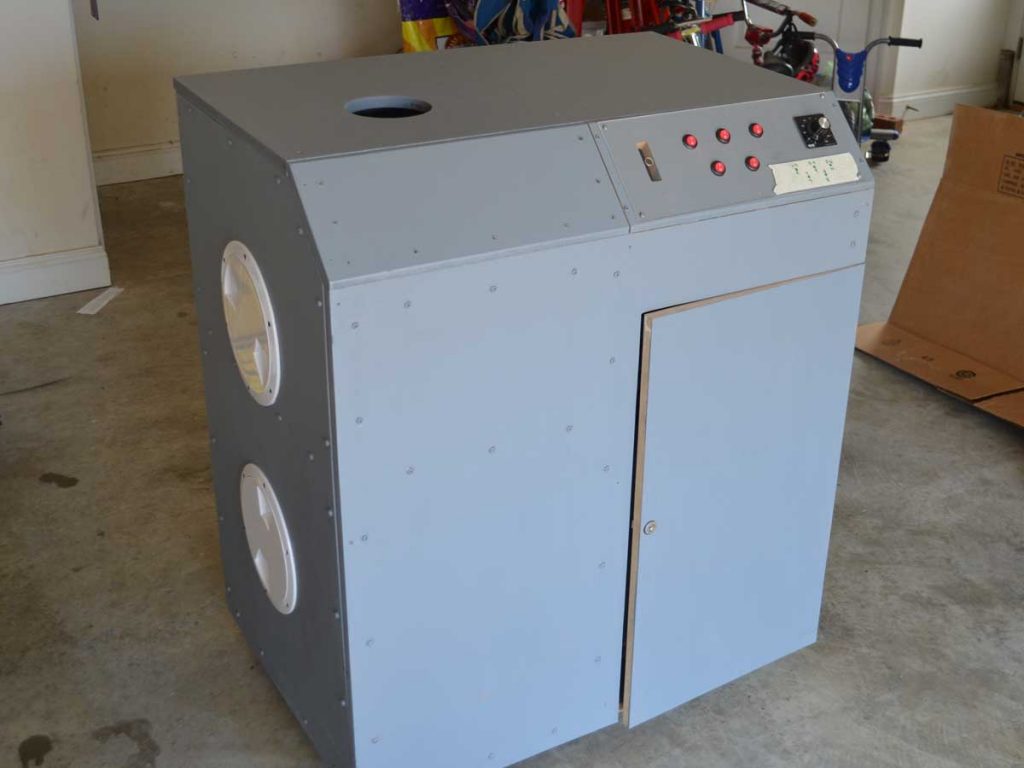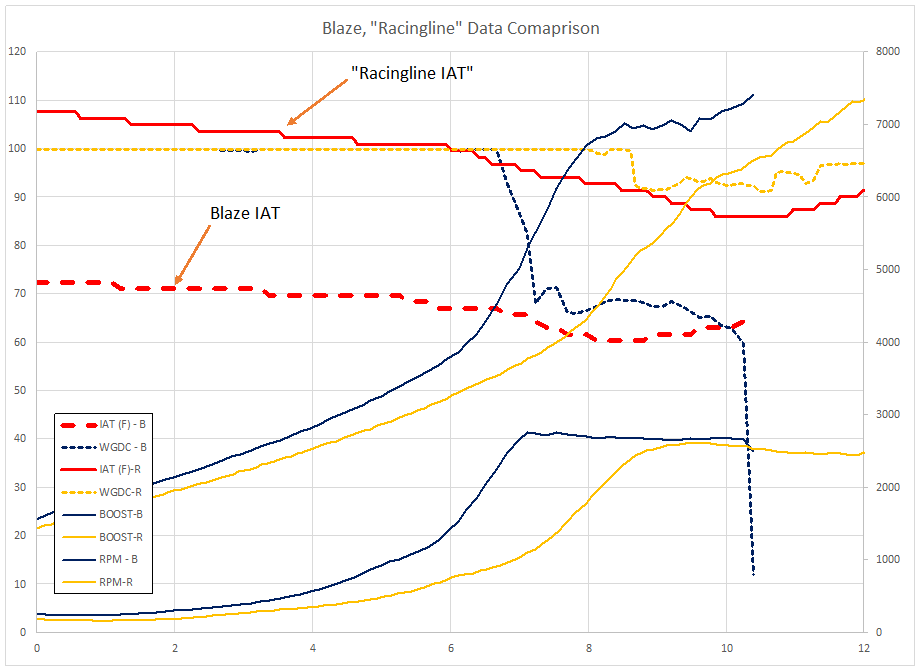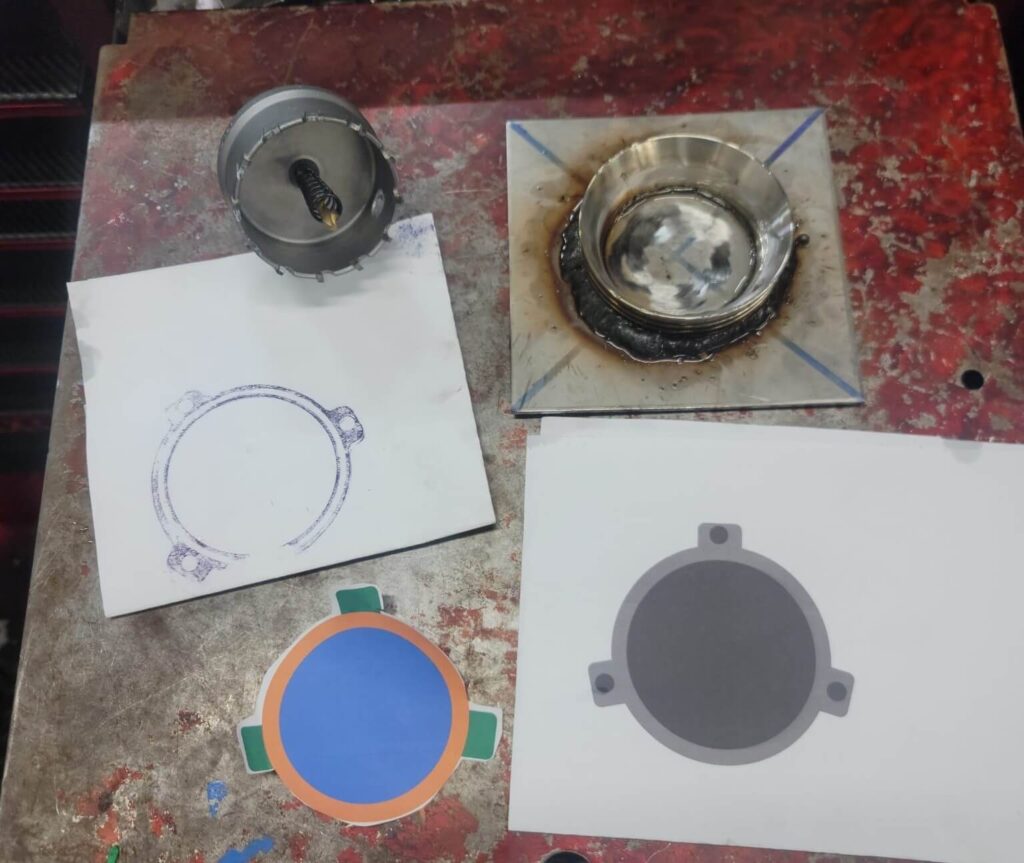Background:
A couple of weeks ago the flow test results of a Blaze ATOM Race v1 intake were posted.
Another data point was proposed in a discussion of the results by somebody that claimed to have compared it with a Racingline R600 intake.


This post will provide an analysis of the claim and evidence in support of it. The post will be updated as additional information is made available.

Claim Analysis:
The claims consist of:
- Outperforms the R600 in real world logs.
- Logs spoke for themselves.
- Real world testing shows 50% > (greater) results over the Racingline R600
Claim 1 – Outperforms the R600 in real world logs.
No data logs were provided when the statement was made.
Claim 2 – Logs spoke for themselves
Presently unable to verify this claim since no logs were presented.
Claim 3 – Real world testing shows 50% > results over Racingline R600.
No evidence has been presented to support this claim.
Questions Posed:
One:
Request to see details contained in datalogs. I requested the data logs from the person who made the claim and I am waiting on them to send them to me. When/If I receive them I will make an update to this post.
Two:
What are the components that were involved?
Answer:

This is valuable information. The original statement only mentions the R600 intake, but an intake is only one of several parts that work together to allow air to travel into the compressor housing.
The MST filter for the R600 intake has been flow tested and performed similarly to the Racingline foam filter but measured slightly less airflow.
The R600 intake is also paired with the CTS turbo inlet elbow. The statement does not indicate if this is the first or second version of this product. The first version has been flow tested and is comparable to the other inlet elbows that have been tested using the stock accordion hose.
Note: The person providing the information stated the CTS turbo inlet elbow is “bunk”.
There is a mishmash of components attached to the Racingline airbox. The statement that the R600 is being compared with the Blaze intake does not convey this.
Lack of information about the CTS turbo inlet elbow is an issue. If the second version of this part is being used there is no information available about how this V2 product compares with the original, that data is available on. (Update: Since making this post I have tested the CTS cast TIP. It is the second lowest flow aftermarket TIP that I have tested.)
Three:
How was airflow being measured?
Answer:
From the reply above: “Difference is in the logs and how Eurodyne measures all that. No bench, all real world.”
Seeing as how the Mk7 does not have a mass airflow sensor it is not evident how airflow is being measured.
I have used the Eurodyne data logging application and not seen where it provides a recording of the airflow through the intake.
Observation:
Occasionally I come across statements like “no bench, all real world” and in certain contexts such as this topic, this is a red flag. It raises doubt that the person making the statement appreciates the difficulty of quantifying the property they are commenting on.
Because the comment was made in the context of a topic that was the flow bench airflow test results I assume the word “bench” is a reference to the flow bench. It’s not evident what “real world” results consist of, but I assume it is associated with some measurement taken from the vehicle that is not airflow.
Obviously, the flow bench exists in the real world too.

With respect to measuring and comparing airflow through components of the Mk7, like an intake, I have more confidence in comparing the measurements generated using the flow bench than the “real world”.
The reason for this is that:
- A flow bench is a measurement tool designed exclusively to measure airflow.
- Using a flow bench eliminates environmental conditions from contributing to the measurement.
- It is easy to eliminate parts that factor into the measurements but aren’t of interest.
- The accuracy of the flow bench minimizes measurement noise.
By comparison, real world measurement of airflow is harder:
- The Mk7 has no sensor to measure airflow.
- Environment and operating conditions are harder to control and some are constantly changing.
- All components needed to operate the vehicle are contributing to the measurement.
- Statistical tools that account for variability need to be applied.
Conclusions:
Presently there is no evidence available to support the claims identified above.
The first set of questions revealed that the configurations being compared are not as clear-cut as the initial claim suggests.
It is unlikely the stated “real world” measurement of airflow is accurate due to the challenges mentioned above.
Updates:
11/5/2022
The logs that were used for this comparison were sent to me. Since they were generated using the Eurodyne datalogger there is no airflow measurement.
Wastegate duty cycle might serve as a crude estimate for relative airflow, but in the case of these data logs, the Intake Air Temperature was significantly higher during the recording with the Racingline intake versus the Blaze intake making the data questionable.

As mentioned above, the “Racingline” intake was using a CTS Turbo turbo inlet elbow (49 mm outlet). Another change that was made is that the adapter that attached the Blaze intake to the turbocharger was not a Blaze product, but a part that started as a Blaze flange and was bored out using a hole saw to 60 mm so it would smoothly transition to a 60mm turbo compressor inlet.

These differences in key components eliminate any possibility of describing this comparison as one between a Blaze intake and a Racingline intake.
Lastly, it was also learned that the vehicle being used for this comparison makes in excess of 600 whp. While the comparison, if it had been valid, might have been useful for vehicles operating at that power level, the differences would have been reduced for more commonly used setups.
Bottom line:
This “real world” information is not useful for comparing how the Blaze intake compares with a Racingline intake.
